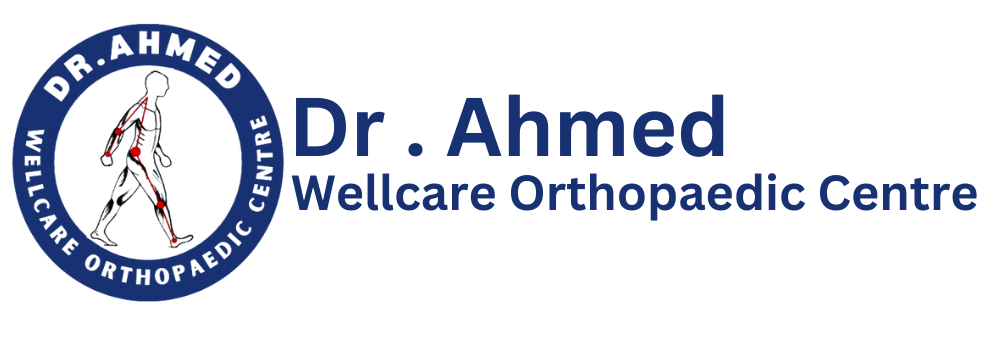Introduction to Vitamin D Deficiency
Vitamin D deficiency is becoming increasingly prevalent, particularly in the Gulf countries. This essential nutrient plays a crucial role in maintaining overall health, contributing significantly to bone health and immune function. Vitamin D is vital for the absorption of calcium and phosphorus, which are fundamental for developing and sustaining strong bones. A deficiency in this vitamin can lead to a range of health complications, such as osteoporosis, rickets in children, and an increased risk of infections.
In the Gulf region, the incidence of vitamin D deficiency has risen alarmingly, with studies suggesting that a substantial percentage of the population is affected. Factors contributing to this deficiency include the region’s climate, which fosters a lifestyle that limits sun exposure, and dietary habits that may not sufficiently provide this nutrient. Although sunlight is a natural source of vitamin D, the intense heat in the Gulf often discourages outdoor activities, leading to reduced skin synthesis of this important vitamin.
Moreover, cultural practices and clothing choices may inhibit adequate exposure to sunlight. Additionally, the reliance on a diet low in vitamin D-rich foods, such as fatty fish, fortified dairy products, and egg yolks, contributes to this prevalent deficiency. Awareness concerning the significance of vitamin D is critical, as many individuals may remain unaware of their low levels until they experience health issues. Recognizing the importance of this vitamin and understanding its implications on health is essential, especially in a region where both environmental and lifestyle factors pose significant challenges to maintaining adequate levels.
As the prevalence of vitamin D deficiency continues to be a pressing health concern in Gulf countries, it is imperative to explore potential treatments and solutions to mitigate its effects and improve the overall health of the population.
Causes of Vitamin D Deficiency in Gulf Patients
Vitamin D deficiency is a critical health issue affecting patients in Gulf countries, primarily due to a combination of cultural practices, lifestyle factors, and dietary habits. The Gulf region is characterized by a harsh climate, where high temperatures often discourage outdoor activities. Many individuals prefer to remain indoors in air-conditioned environments, significantly reducing their exposure to sunlight, which is essential for the skin’s synthesis of vitamin D.
Cultural practices also play a pivotal role in limiting sun exposure. In many Gulf countries, traditional clothing styles associated with modesty can hinder the skin’s ability to absorb sunlight. For instance, long-sleeved garments and full-body coverings are commonly worn, further restricting the natural production of vitamin D. This situation is exacerbated by the fact that outdoor activity, particularly during peak daylight hours, is often minimized due to extreme heat, leading to a lifestyle that is predominantly indoor-oriented.
Dietary factors contribute significantly to vitamin D levels in Gulf populations. Many individuals do not consume adequate amounts of vitamin D-rich foods such as fatty fish, fortified dairy products, or egg yolks. This lack of dietary sources, combined with geographical and climatic conditions, results in a higher prevalence of vitamin D deficiency in these populations. Certain demographics, such as individuals with darker skin tones, are at an even greater risk. Melanin in darker skin reduces the skin’s ability to produce vitamin D from sunlight, necessitating a higher level of sun exposure than individuals with lighter skin tones. Additionally, persons with limited outdoor activities face compounded challenges to maintaining sufficient vitamin D levels.
Overall, these interconnected causes underline the importance of understanding vitamin D deficiency in Gulf patients. Addressing these factors is essential for creating effective public health strategies to mitigate this prevalent concern.
Treatment Options for Vitamin D Deficiency
Treating vitamin D deficiency involves a multifaceted approach, primarily focusing on medical interventions and lifestyle modifications. The most common treatment is the use of vitamin D supplements, which come in two primary forms: vitamin D2 (ergocalciferol) and vitamin D3 (cholecalciferol). Vitamin D3 tends to be more effective in raising and maintaining adequate levels of vitamin D in the body. Dosage can vary based on individual needs, age, and severity of deficiency, which makes it essential to consult a healthcare professional for personalized recommendations.
Monitoring vitamin D levels is critical during the treatment process. This involves regular blood tests to evaluate serum 25-hydroxyvitamin D concentrations, ensuring levels return to a sufficient range. Patients may need to adjust their supplement intake based on these results. It is advisable for individuals, especially those living in regions with limited sunlight exposure, to regularly monitor their vitamin D levels to ensure they are within the recommended range.
In addition to supplementation, lifestyle changes play a vital role in managing vitamin D deficiency. Increased sun exposure is one of the simplest methods to boost vitamin D levels. Exposing the skin to sunlight for approximately 15 to 30 minutes a few times a week, depending on skin type and geographic location, can significantly enhance natural vitamin D production. Dietary sources rich in vitamin D, such as fatty fish, fortified dairy products, and egg yolks, should also be integrated into meals. For those with dietary restrictions, fortified foods and beverages serve as an alternative to maintain adequate levels.
Failing to address vitamin D deficiency can lead to several health risks, including weakened bones, increased susceptibility to infections, and other chronic conditions. Therefore, recognizing when to seek professional guidance is crucial. Those experiencing symptoms such as fatigue, frequent illnesses, or bone pain should consult a healthcare provider for timely evaluation and intervention.
Ways to Increase Vitamin D Levels
Increasing vitamin D levels is essential for enhancing overall health, particularly in individuals living in regions like the Gulf, where deficiency is prevalent. One of the most effective methods to boost vitamin D levels is through safe sun exposure. The skin synthesizes vitamin D upon exposure to ultraviolet B (UVB) rays. It is recommended for individuals to spend about 10 to 30 minutes outdoors several times a week, depending on their skin type, time of day, and geographical location. To avoid sunburn or skin damage, the use of sunscreen should be limited during this brief exposure, and peak times for sunlight should be identified to maximize benefits while minimizing risk.
Dietary changes play a significant role as well. Incorporating more vitamin D-rich foods into daily meals can help address deficiencies. Foods such as fatty fish (like salmon and mackerel), egg yolks, fortified dairy products, and plant-based milks should be included in the diet. Additionally, mushrooms exposed to UV light can be a great source of vitamin D for those following a vegetarian or vegan diet.
Supplementation may be necessary for individuals unable to meet their vitamin D needs through sun exposure and diet. Vitamin D supplements, such as vitamin D2 or D3, can effectively raise levels in the body. It is advisable to consult with a healthcare provider before starting any supplementation to determine the appropriate dosage and form based on individual needs.
Incorporating habits that promote increases in vitamin D can further assist individuals in achieving optimal health. This may include engaging in outdoor activities, meal planning with vitamin D-rich foods, and setting reminders for regular supplementation. Regular testing is crucial to monitor vitamin D status, ensuring levels remain adequate for long-term health. By adopting these strategies, individuals can work towards preventing vitamin D deficiency and enhancing overall well-being.
Frequently Asked Questions?
Q. Why is Vitamin D Deficiency Common in Gulf Countries?
Ans. Despite abundant sunlight, many Gulf residents experience deficiency due to limited sun exposure, cultural clothing practices, and staying indoors for long periods due to extreme heat.
Q. What Are the Symptoms of Vitamin D Deficiency?
Ans. Symptoms include fatigue, muscle weakness, bone pain, frequent infections, mood swings, and in severe cases, osteoporosis or rickets in children.
Q. How Does Vitamin D Deficiency Affect Bone Health?
Ans. Vitamin D plays a crucial role in calcium absorption. Deficiency can lead to weak bones, increasing the risk of fractures, osteoporosis, and rickets.
Q. What Are the Main Causes of Vitamin D Deficiency in Gulf Patients?
- Lack of sun exposure
- Poor dietary intake of Vitamin D-rich foods
- Darker skin pigmentation, which reduces Vitamin D synthesis
- Underlying medical conditions like kidney or liver disorders
Q. How Can Gulf Residents Get More Vitamin D Naturally?
- Spending 15–30 minutes in sunlight daily (preferably in the morning or late afternoon)
- Eating Vitamin D-rich foods like fatty fish, eggs, fortified dairy, and mushrooms
- Maintaining a balanced diet to support Vitamin D metabolism
Q. Who Is at Higher Risk of Vitamin D Deficiency in the Gulf?
- Women wearing full-body coverings (Abayas, Niqabs)
- Elderly individuals with reduced sun exposure
- People with darker skin tones
- Office workers who stay indoors most of the time
Q. Can Vitamin D Deficiency Cause Depression or Mood Changes?
Ans. Yes, Vitamin D plays a role in brain function, and its deficiency has been linked to mood disorders, including depression and seasonal affective disorder (SAD).
Q. How Can Gulf Residents Check Their Vitamin D Levels?
Ans. A simple blood test (25-hydroxy Vitamin D test) can measure levels. Doctors may recommend it for those experiencing symptoms or at risk of deficiency.
Q. What Are the Best Supplements for Treating Vitamin D Deficiency?
Ans. Doctors often prescribe Vitamin D3 (cholecalciferol) supplements in doses based on severity, ranging from 600 IU to 5000 IU daily or weekly high-dose regimens.
10. How Long Does It Take to Recover from Vitamin D Deficiency?
Ans. Recovery depends on the severity. With proper supplementation and sun exposure, noticeable improvement may occur within 8–12 weeks, but long-term maintenance is essential.









